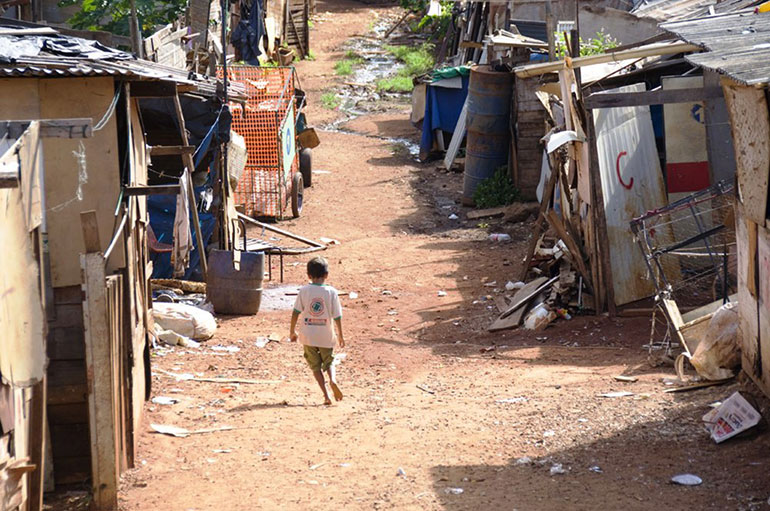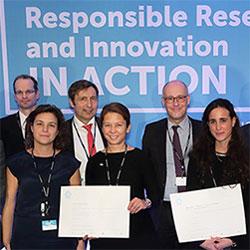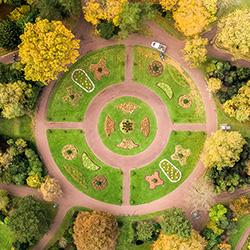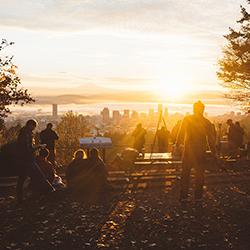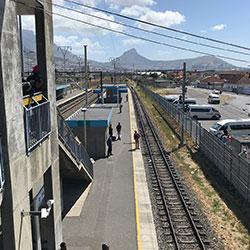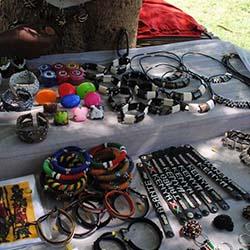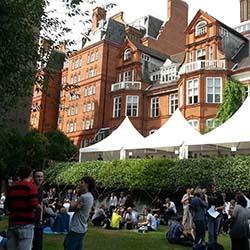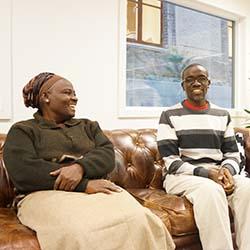After 90 minutes and three bus connections I have finally arrived in front of the office of Mistra Urban Futures at Chalmers in Gothenburg, excited from head to toe (and filled with nerves) for what the next few months will bring.
As Mistra Urban Futures’ new intern and a Master Student in Global Gender Studies my focus will be on how gender could be recognized, implemented and become integral parts of project design and methodology.
A factor often ignored in urban planning is the gender dimension. Urban planning is far from neutral. The spaces we inhabit mirror power structures and favor some features over others. Traditional planning has often neglected to analyze the effects that planning has on different groups and interests of the community, and has therefore failed to taken the multitude of everyday lives into consideration in its design. As Sara Ortiz Escalante and Blance Gutiérrez Valdivia from the feminist urban design and planning cooperative Col·lectiu Punt 6 (Collective Point 6) illuminates, traditional urban planning has been based on a view of cities and the lives and experience of a few, a small sub-section of society which in turn has shaped the participation and planning of cities. This have resulted in a built environment that responds to the interests and needs of a small part of urbanites, mainly ‘white male, middle-class, middle-aged, employed, and with full physical and mental capacities’ (Article by Ortiz Escalante & Gutiérrez Valdivia, 2015).
Challenges are substantial. Cities have become significant places for inequalities where some are able to accumulate material wealth (and the power associated with it) much faster and in much bigger volume than others. Feminist urban planners have long raised the fact that women’s – children’s, old peoples’, people who belong to ethnic or sexual minorities’ – experiences and voices in cities are under-represented. Although there are places in which these groups are enable to thrive and be included in planning and decision-making processes, there are vastly more places where they are not.
Cape Town and Gothenburg are two cities where Mistra Urban Futures is based who share, despite differences, structural injustices in urban planning. As stressed in Co-production in Action: towards realising just cities, Cape Town is still a racially segregated city. Although some integration is evident, one of the primary challenges is linked to access to land and housing, as large numbers of households live in informal settlements and other types of inadequate housing, Cape Town is still spatially organized according to colonial and apartheid urban planning. In the same time zone but in a different continent, Gothenburg also have problems with segregation, mainly segregation between areas. Life expectancy for women is 7.5 years longer and for men 9.1 years longer in affluent areas compared to the most deprived.
As the above examples indicate there is a need to integrate justice in urban planning. The cities of the 21st century thus require a gender perspective in planning processes to ensure that their infrastructure can support the objectives and needs of the urbanites to create a city for everyone, regardless of gender and other aspects of their identity.
The presence of a gender perspective in urban planning allows one to acknowledge that to make cities an equal place, one must let the different facets of people’s everyday life to be prioritized and planned for so that it reflects not just some needs but everyone’s. Since people experience and uses space differently, it is of vital importance that the different priorities and needs of urbanites shine through in the processes of city and regional planning. This requires the integration and participation of a diversity of urbanites in the planning processes, an environment that takes characteristics such as gender, ethnicity, age, religion, disability and class into consideration. Without a gender perspective, urban planning will continue to reproduce, rather than challenge, stereotypes within communities.
An analysis of the complexity of realities and multiple activities people carry out on a daily basis would enable planners to understand the diverse needs that coexist in our cities. Public space, the streets, housing, transportation and other spaces are all places people regularly use, where their lives take place, and must thus reflect the different needs that we all have as individuals. In combination with the characteristics of local geography, climate, they all tell us different stories. Stories that help us come up with ideas and solutions of how address urbanites’ context-specific gender interests and needs.
The goal should therefore be to create inclusive platforms where knowledge and co-production strives to realize an urban life free of discrimination of any kind. Create an environment where the vision of realizing just cities not only becomes a vision, but also a reality.
Gender is a social construction, whereas sex is the biological features of women and men. Gender is hence social and cultural constructs based on the biological differences between the sexes that assign different capacities, behaviors, emotional and intellectual characteristics to girls, women, boys, men and trans* people. The way biological sex is interpreted, valued and constructed into different genders is culturally specific and fluid and hence varies across space and time. Gender is something that we ‘do’ not something that we are and the ‘doing’ of gender is conditioned by societal structures and created through human interaction. The constant interactions constituting the ‘doing’ of gender create socially constructed gendered ways of being and acting that are mistakably viewed as ‘natural’ expressions of human bodies
Trans* is an umbrella term that refers to all of the identities within the gender identity spectrum. Trans with the asterisk includes all non-cisgender gender identities, including transgender, transsexual, transvestite, genderqueer, genderfluid, non-binary, gender-fuck, genderless, agender, non-gendered, third gender, two-spirit, bigender, and trans man and trans woman.
Intersectionality highlights how different structural sources of inequality such as gender, ethnicity, class, and sexual identity are socially constructed and interrelated. People’ s identities intersect with other social identities.
Photo by Cauan Kaizen, CC BY-SA 3.0, https://commons.wikimedia.org/w/index.php?curid=19441566
